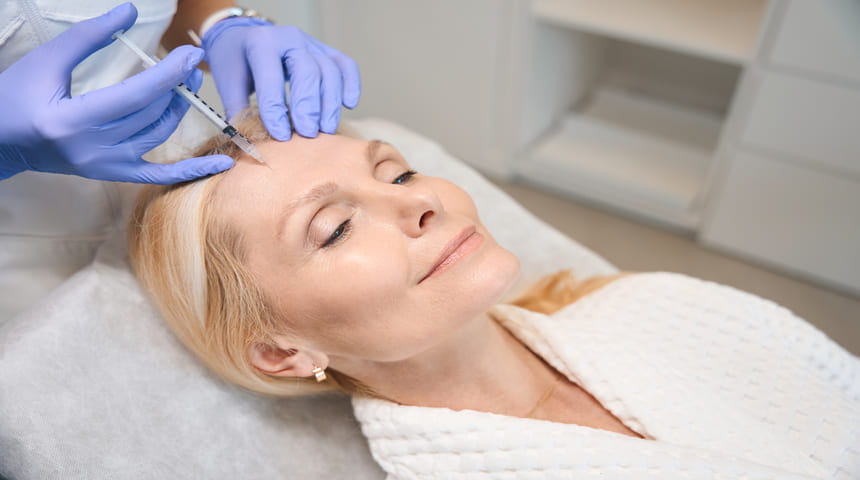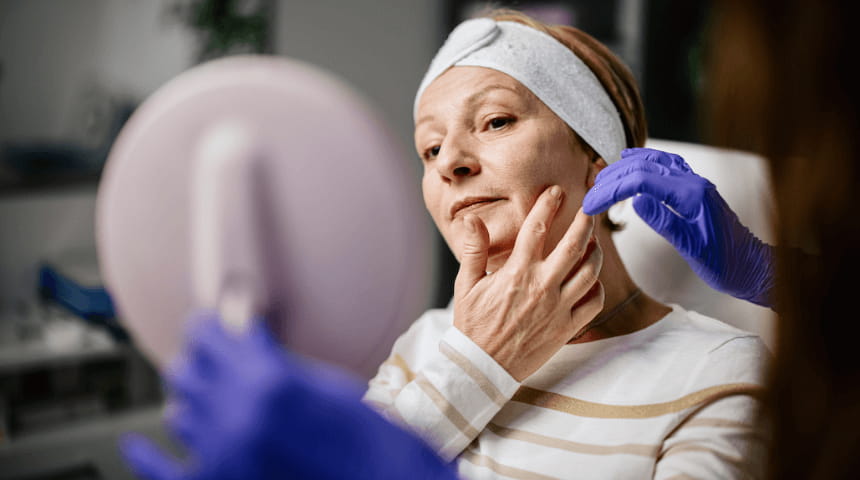When you think about ways to restore a more youthful appearance, you might envision facelifts or other cosmetic surgeries. What you may not realize is that there are several far less invasive options that can help turn back the aging clock.
These options may not yield the dramatic results of a facelift. But they offer significant advantages, including fewer risks of complications, lower costs and quicker recovery times. And since not everyone is a candidate for surgical procedures, these may be the only options for some patients.
Picking the treatment that’s right for you is done in consultation with your plastic surgeon. Together, you can explore what is bothering you – including wrinkles, sagging skin, scarring and brown spots – and the most effective way to treat it. Your surgeon will help you explore the options, starting with the easiest to the more complex.
Let’s take a look at five of the most common non-surgical options.
Botox Injections
This is one of the most widely used cosmetic procedures, with 4 million Americans receiving them every year. It’s important to know, however, that Botox is just a proprietary name for a treatment that uses botulinum toxin. There are several other brands that offer the same results.
The substance works by blocking nerve signals to the muscles at the injection site. Unable to receive the nerve signal, those muscles cannot contract. This is particularly useful in treating wrinkles caused by decades of repetitive facial movements – raising and lowering your eyebrows, smiling and any other form of facial animation. It can help with:
- Crow’s feet
- Forehead furrows
- Frown lines
- Neck bands
- Skin dimpling on the chin
- Downturned mouth corners
The painless procedure is performed in your plastic surgeon’s office, using a tiny needle to inject small doses of the drug into the targeted facial muscles, causing the muscles to relax and smoothing the wrinkles. The treatment generally lasts three to four months, though it varies from patient to patient.
Laser Treatment
Lasers work by focusing powerful beams of light at irregular skin. The laser targets the water layer in the skin, causing it to superheat and contract. This allows your surgeon to remove damaged or unwanted skin, one layer at time. While removing those outer layers of skin, the laser also stimulates the growth of new skin. Lasers are commonly used to treat:
- Wrinkles or fine lines around the eyes, forehead and mouth
- Liver spots
- Sun spots
- Acne scars
- Birthmarks
A broader laser treatment can be used for total facial rejuvenation, which is literally peeling your face. Your surgeon uses the laser to remove the outer skin layer on your face. The office treatment takes 30 to 45 minutes, using topical numbing. Afterward, you’ll feel like you’ve had a sunburn.
Dermal Fillers
This is exactly what it sounds like. A gel substance is injected under your skin to plump up your face or various facial features. Among the fillers is hyaluronic acid, a naturally occurring substance that gives your skin volume, while helping with hydration. As you get older, your body stops producing it.
Think of your skin as a wall that has cracks. The gel injections act like spackling, which fills those cracks. They’re useful for a range of applications, including filling facial wrinkles, plumping lips or cheeks, improving the look of recessed scars and enhancing shallow facial contours.
The office treatment usually lasts 10 to 18 months, depending on the patient and the type of filler used.
Chemical Peels
Similar to laser treatments, a chemical peel uses an acid to create a controlled level of burning of your facial skin. This removes upper layers of damaged skin, which is replaced by new skin. It works similar to how a sunburn leaves behind skin that looks healthier and brighter. Most of these treatments are done in the office and can be used for:
- Acne scars
- Wrinkles and fine lines
- Irregular skin pigmentation
- Some scars
- Sun-damaged skin
Chemical peels are less effective against deeper wrinkles and scarring.
Microneedling
Microneedling is a procedure that uses tiny needles and your body’s own healing abilities. The technique traces its origins back at least 2,000 years to China, where it appeared in a book called “The Yellow Emperor’s Classic of Internal Medicine,” written around 300 BC.
The procedure uses a device – it resembles a fat pen – equipped with a few dozen oscillating needles. Your surgeon runs the device over the treatment area, where it causes tiny cuts. These micro wounds force the body to throw healing resources to the site, filling in old scars and wrinkles as a result.
The treatment has long been a gold standard for treating acne scarring. It can also be used for wrinkles, uneven skin texture, stretch marks, surgical scars and sagging skin.
Choose to Stay in Touch
Sign up to receive the latest health news and trends, wellness & prevention tips, and much more from Orlando Health.
Sign Up





